The Missouri Department of Conservation (MDC) works to protect and manage Missouri’s fish, forest, and wildlife resources, while ensuring all citizens have opportunities to engage with nature.
The Confluence Collaborative spoke with Aisha Muhammad, Community Conservation Planner, Mary Fuller, Conservation Educator, and Evan Parker, Community Forester, about MDC’s work in St. Louis; the transformative impact of their educational programs; and research questions they hope to explore with WashU scholars.
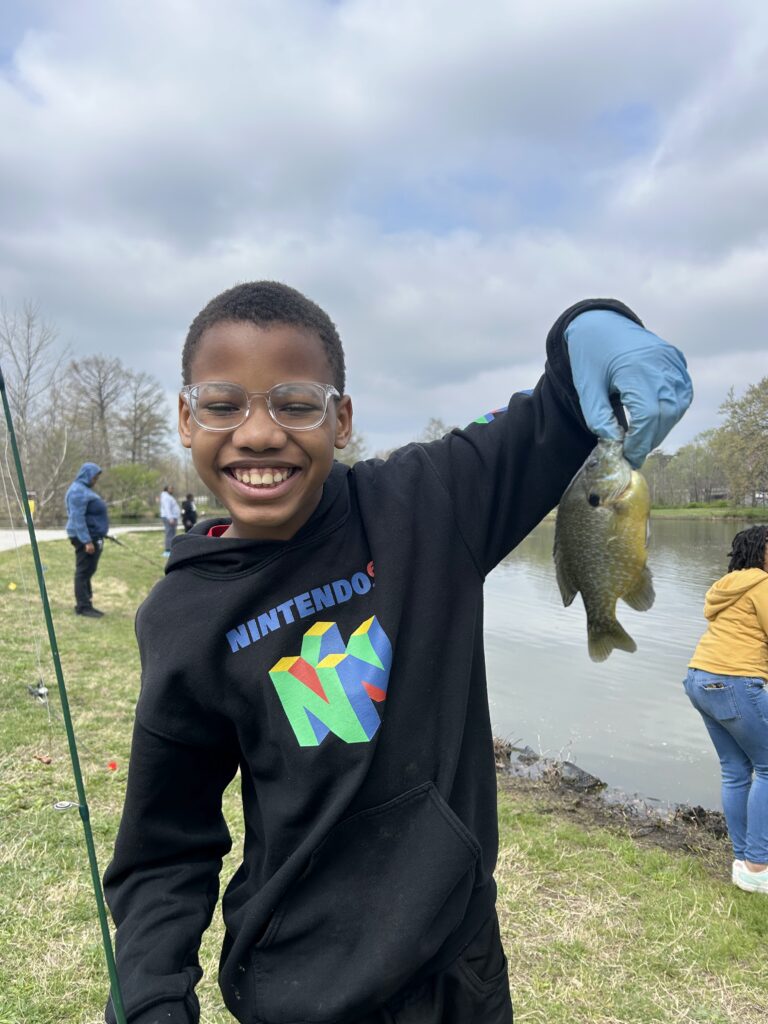
MDC Programming Overview
- Hunting & Fishing Permits: MDC manages all hunting and fishing licenses and regulations across Missouri, ensuring sustainable use of fish, forest, and wildlife resources.
- Science Curriculum: MDC runs the Discover Nature Schools program, which provides free, standards-aligned PreK-12 science curriculum to schools across Missouri, with materials that include teacher guides and student workbooks centered on nature and outdoor learning.
- Public Programming: MDC sponsors free programming to engage people of all ages in the outdoors. Their programs include: fishing, archery, foraging, and cooking lessons, arts and crafts, guided hikes, classes focused on certain plants and animals, outdoor survival skills, nature arts, and birdwatching.
- Community Cost Share Funding: MDC provides financial and technical assistance to municipalities, schools, nonprofits, churches, and community organizations for conservation projects, including tree planting, rain gardens, and pollinator habitats.
- Conservation Areas & Public Access: MDC manages roughly 1,000 conservation areas across Missouri, totaling about a million acres of free public spaces for hunting, fishing, hiking, and nature engagement.
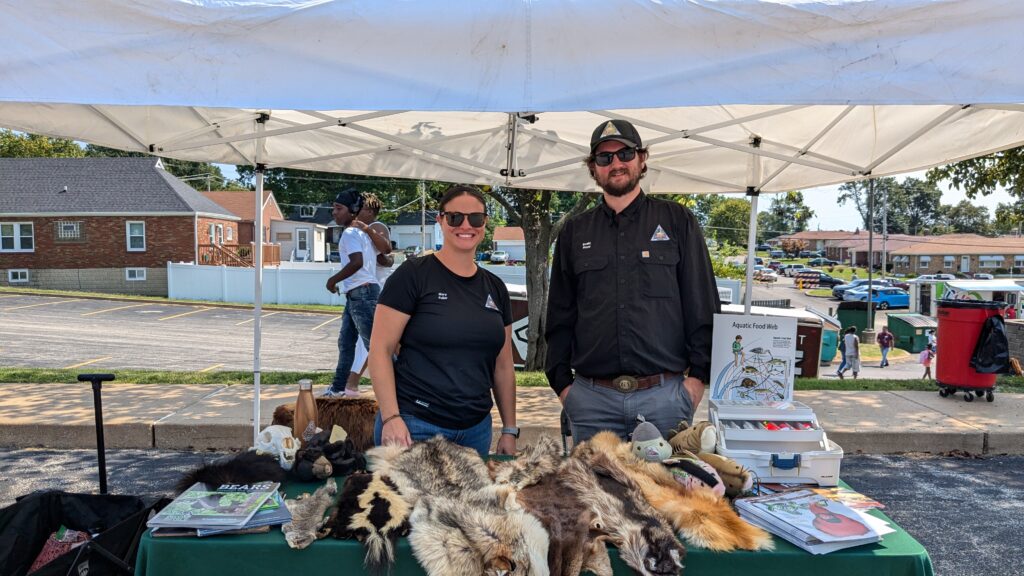
And now, a Q & A with Aisha Muhammad, Mary Fuller, and Evan Parker:
What’s an aspect of MDC’s work that is particularly meaningful to you?
Aisha Muhammad: One program I’m particularly proud of is our partnership with Employment Connection and The Nature Conservancy on a Green Jobs Training Program. It provides six to eight weeks of paid training in conservation practices for folks who’ve experienced barriers to traditional employment—whether they’re struggling with homelessness, poverty, or lacking a high school diploma.
One client was able to move out of a homeless shelter and into his own apartment. As a child, he’d done volunteer work at Brightside with native plants and always loved it, but didn’t know he could make a career out of it. Seeing people find pathways into meaningful work they’re passionate about—that makes the challenging days worth it.
Mary Fuller: One of the most memorable experiences for me has been working with kids from Hickey Elementary on our Discover Nature Fishing program. We took fifth and sixth graders to Suson Park, and one student said he thought he was on Wild Kratts because he’d never been immersed in nature like that before. Some had never even been to Forest Park.
It’s also a special experience to watch a kid catch their first fish—they’re literally screaming with excitement, jumping up and down. One kid said, “My grandma is going to be so proud of me.” They’re accomplishing something they never would have gotten to do without this program.
We also work with the Missouri School for the Blind and the Central Institute for the Deaf, so we’re getting kids of all abilities and backgrounds out there engaging with nature.
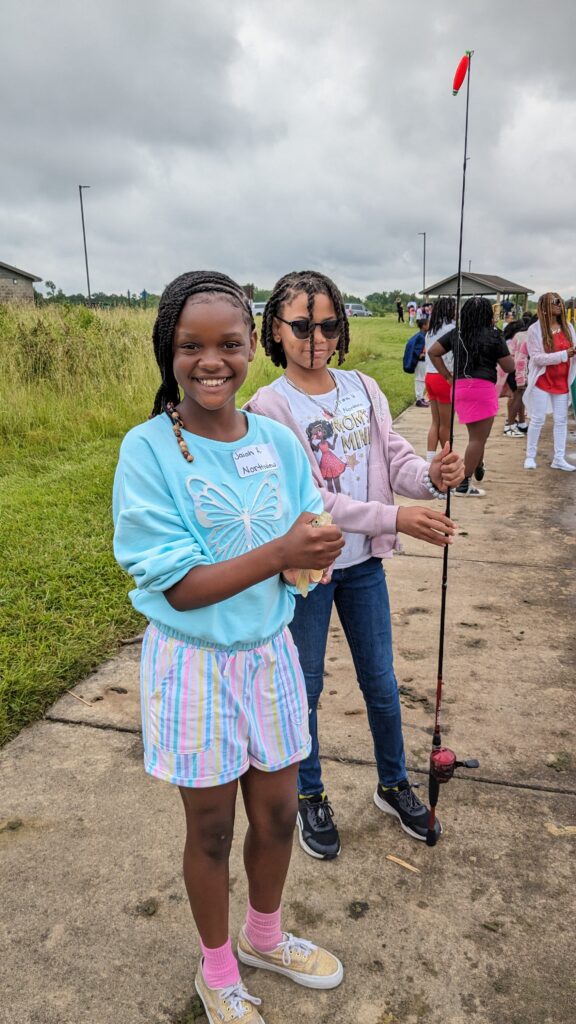
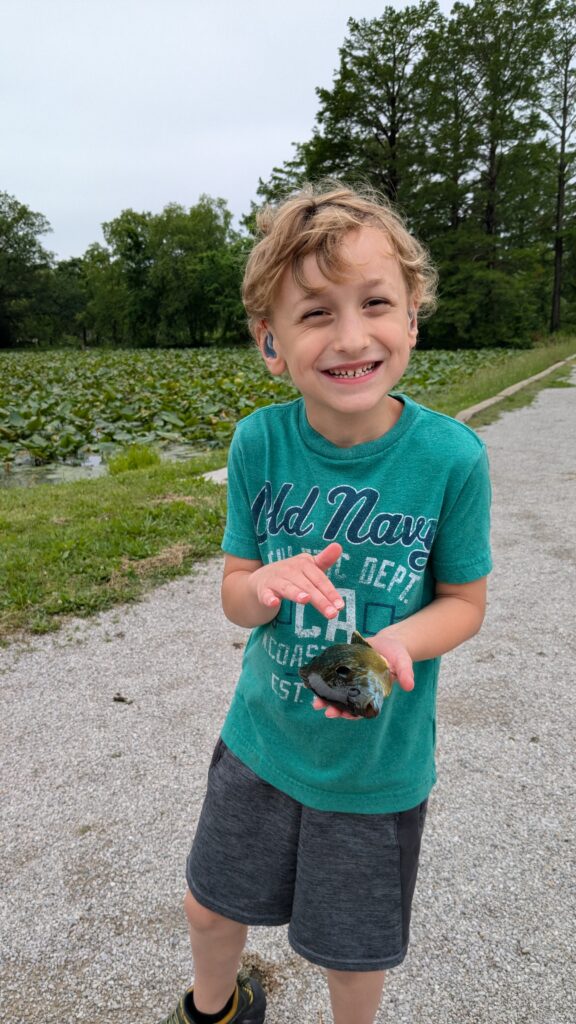
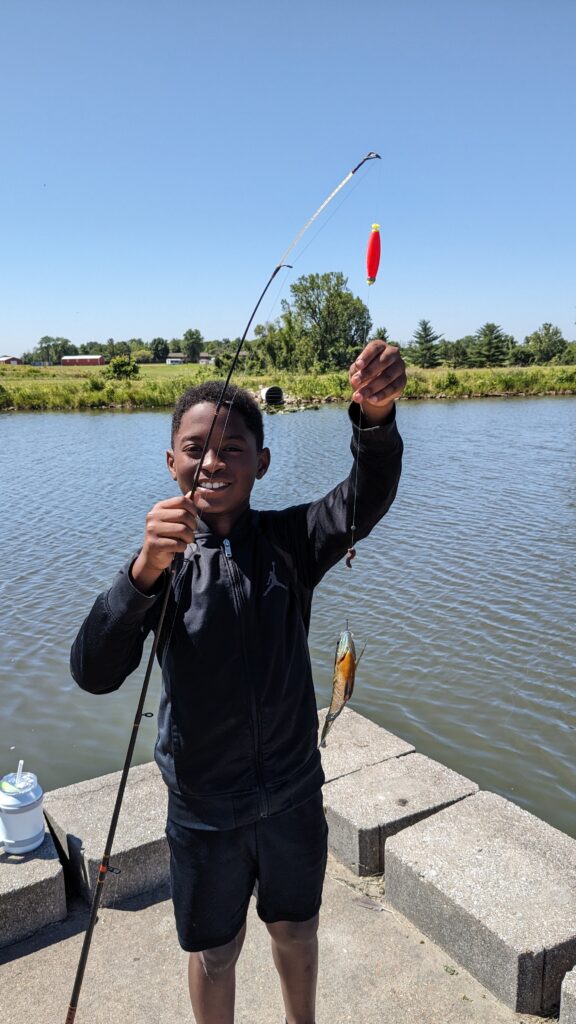
How is MDC’s funding structure configured, and how does that structure impact your work?
MF: We’re very unique in how we’re funded. There’s a one-eighth of 1% sales tax on anything you buy in Missouri that has sales tax on it—that comprises about 60% of our budget, roughly $10-15 per person, per year. We do receive some federal funding, mostly reimbursements for education programs, but the set-aside sales tax means the governor can’t decide to cut our budget.
Our federal funding mostly comes from additional sales tax on items related to hunting, shooting sports, and fishing. Those federal funds, in the form of reimbursements, go back into our funding for hunting and fishing education.
We’re kind of the envy of other states because we have this funding structure that insulates us from the whims of politicians.
How has MDC’s work been impacted by the May 2025 tornado?
AM: The tornado has mainly impacted us through our partners and their capacity. Organizations like Forest ReLeaf of Missouri, Forest Park Forever, and the City of St. Louis Forestry are swamped with storm damage mitigation work that will continue for months. We’ve been providing technical support and leveraging existing funding agreements and partnerships to support that recovery work. It’s been disheartening to see projects we’ve worked so hard on be damaged, but we’re working alongside innovative partners to brainstorm solutions together.
MF: The logistical challenges have been significant, especially with schools that were relocated. We’ve been tracking where students and teachers moved, making sure they still have access to supplies and curriculum materials. It’s been a lot of moving parts, but we’re making sure those students can still access MDC’s science curriculum and outdoor experiences.
AM: In June, we held an O’Fallon Park Family Fun Day in North City, partnering with the Black Healers Collective to hold space for community grief regarding the tornado, while also providing information on resources and supplies. We wanted to have something fun for people, while also addressing the reality of storm damage and getting feedback on future storm resiliency planning, in particular building a healthy tree canopy.

Evan Parker: Community conservation as a whole, but particularly community forestry, is just as much about public relations and community engagement as it is about technical resource management. If people don’t care and value trees or other natural resources, we will never succeed at expanding and managing those resources.
The challenge is that we can spend 20 years getting people to recognize the value and benefit of trees in the community, and then a tornado destroying trees and dropping limbs on houses/cars/people can, often understandably, undo all that work in 15 minutes. That, I think, is a much more concerning impact than the actual physical impacts of the tornado on our, and our partners’, projects/work.
It’s important to remember that all of this work is very long term. Trees grow slowly, people form and change opinions slowly, etc. So, while we are working on projects in the short term, much of the work to address this issue will be slow work over years and years. This can include outreach and education events, but it also involves just demonstrating effective urban forest management.
For instance, MDC is providing funds to the City of St. Louis Forestry Division to contract the workforce development organization AmeriCorps St. Louis to cut down hazardous trees in parks and plant new ones, with a focus on areas impacted by the tornado.
Tree resistance often comes from seeing neglected and unmaintained trees in their neighborhood, so showing people that tree canopy does not have to be a dangerous liability, but can be a valuable asset, will go a long way.
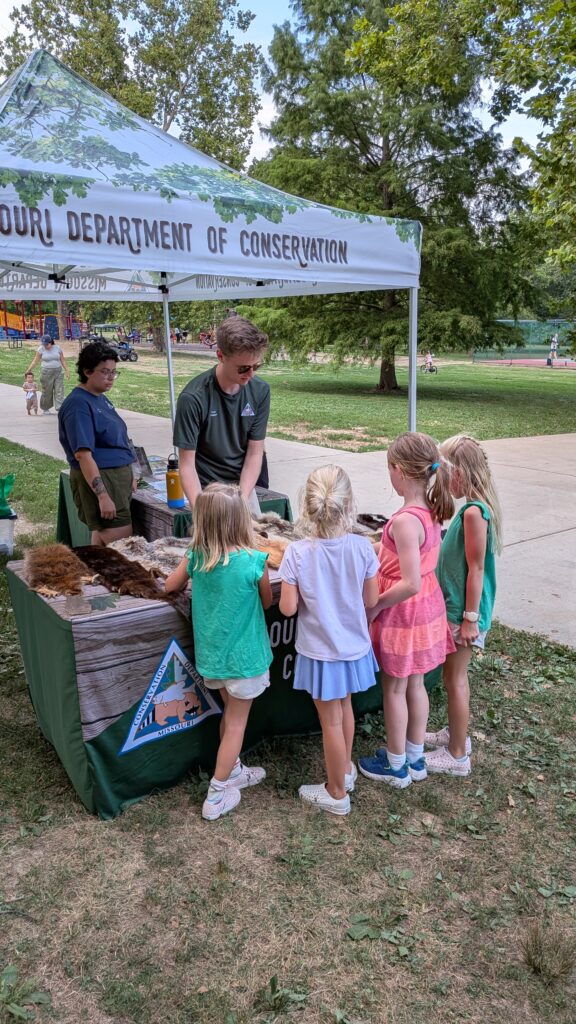
What research questions are you most interested in exploring in collaboration with academic partners?
MF: Since the Discover Nature Schools K-2 curriculum is relatively new and schools are implementing it at different levels, there’s a lot we want to understand. What does implementation look like in reality? Are schools actually using our curriculum? What are the impacts of the courses on student attitudes towards the environment? And critically, how does our curriculum impact teachers’ comfort level teaching about the environment?
We have 40 elementary schools in St. Louis participating, and there are huge differences between them—schools with green schoolyards and gardens, versus those with only asphalt playgrounds; schools with different levels of teacher engagement, etc. Understanding those variations within the same district would be valuable.
AM: I’m really interested in the social-psychological impacts of green space, particularly around community placemaking. What happens to community morale when residents participate in directed greening projects? How does it change when you go from feeling like nobody cares, to having resources and networks to revitalize your community with conservation-focused projects?
I’m also interested in seeing certain scientific metrics—how much would specific amounts of tree planting reduce flooding in a particular area? How does tree canopy cover impact asthma rates? Getting those numbers would really help with urban planning.
MF: We’ve also been working with the Living Earth Collaborative on biodiversity questions. Are small pollinator gardens adding up to something meaningful? Does it make a difference if all you have is a couple of native plants in a pot on your porch, or do you need a certain amount of space? What if everyone on a block has pots—does that collective effort create enough habitat? These questions are especially important in urban spaces where people have smaller physical areas to work with.
If you’re a WashU scholar interested in exploring any of the research questions outlined above, please reach out to our team at confluence@wustl.edu.
To learn more about MDC’s programs or to get involved, visit mdc.mo.gov or check out their events at mdc.mo.gov/events. You can learn about volunteer opportunities here.